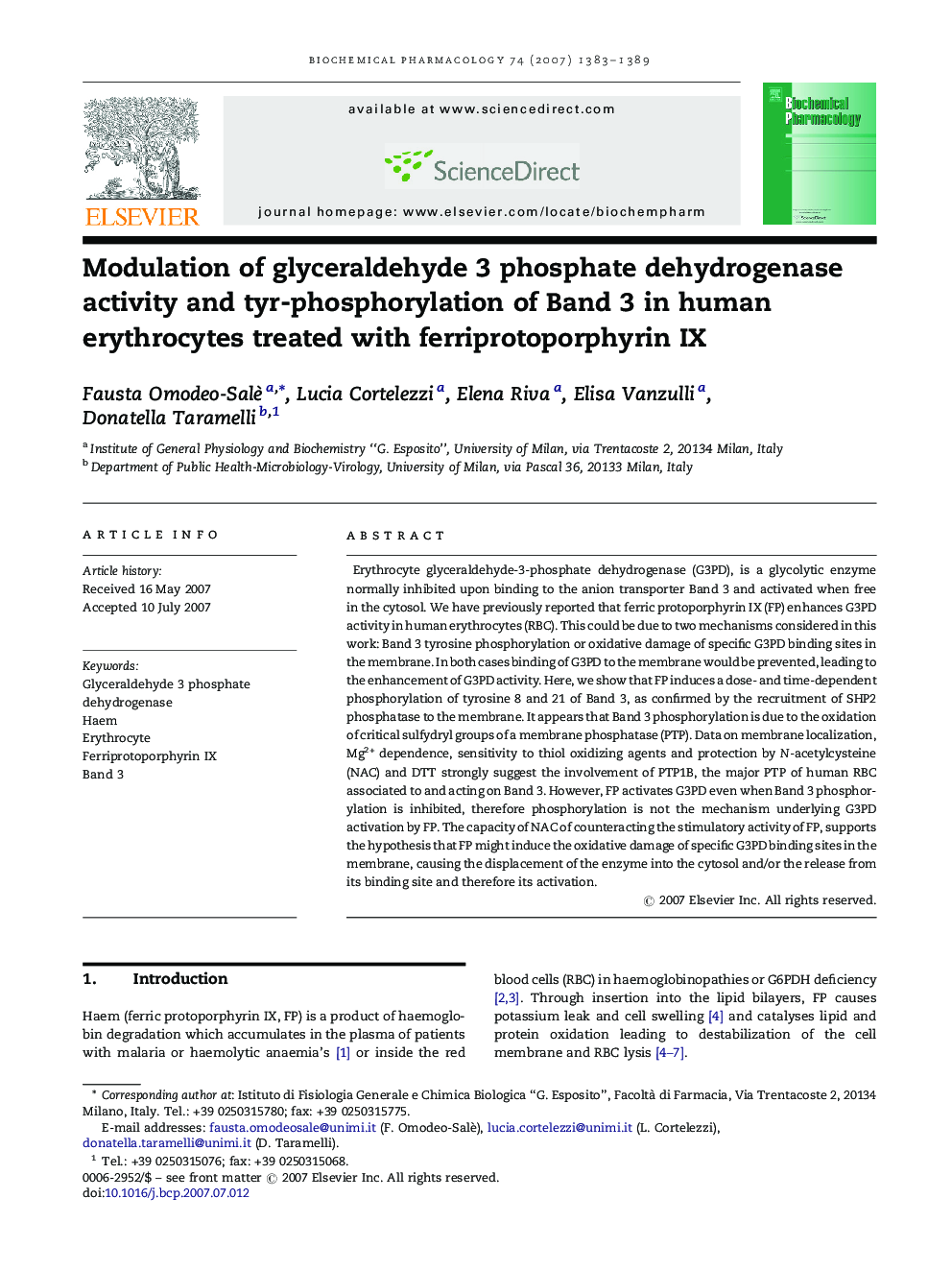| Article ID | Journal | Published Year | Pages | File Type |
|---|---|---|---|---|
| 2514590 | Biochemical Pharmacology | 2007 | 7 Pages |
Erythrocyte glyceraldehyde-3-phosphate dehydrogenase (G3PD), is a glycolytic enzyme normally inhibited upon binding to the anion transporter Band 3 and activated when free in the cytosol. We have previously reported that ferric protoporphyrin IX (FP) enhances G3PD activity in human erythrocytes (RBC). This could be due to two mechanisms considered in this work: Band 3 tyrosine phosphorylation or oxidative damage of specific G3PD binding sites in the membrane. In both cases binding of G3PD to the membrane would be prevented, leading to the enhancement of G3PD activity. Here, we show that FP induces a dose- and time-dependent phosphorylation of tyrosine 8 and 21 of Band 3, as confirmed by the recruitment of SHP2 phosphatase to the membrane. It appears that Band 3 phosphorylation is due to the oxidation of critical sulfydryl groups of a membrane phosphatase (PTP). Data on membrane localization, Mg2+ dependence, sensitivity to thiol oxidizing agents and protection by N-acetylcysteine (NAC) and DTT strongly suggest the involvement of PTP1B, the major PTP of human RBC associated to and acting on Band 3. However, FP activates G3PD even when Band 3 phosphorylation is inhibited, therefore phosphorylation is not the mechanism underlying G3PD activation by FP. The capacity of NAC of counteracting the stimulatory activity of FP, supports the hypothesis that FP might induce the oxidative damage of specific G3PD binding sites in the membrane, causing the displacement of the enzyme into the cytosol and/or the release from its binding site and therefore its activation.
